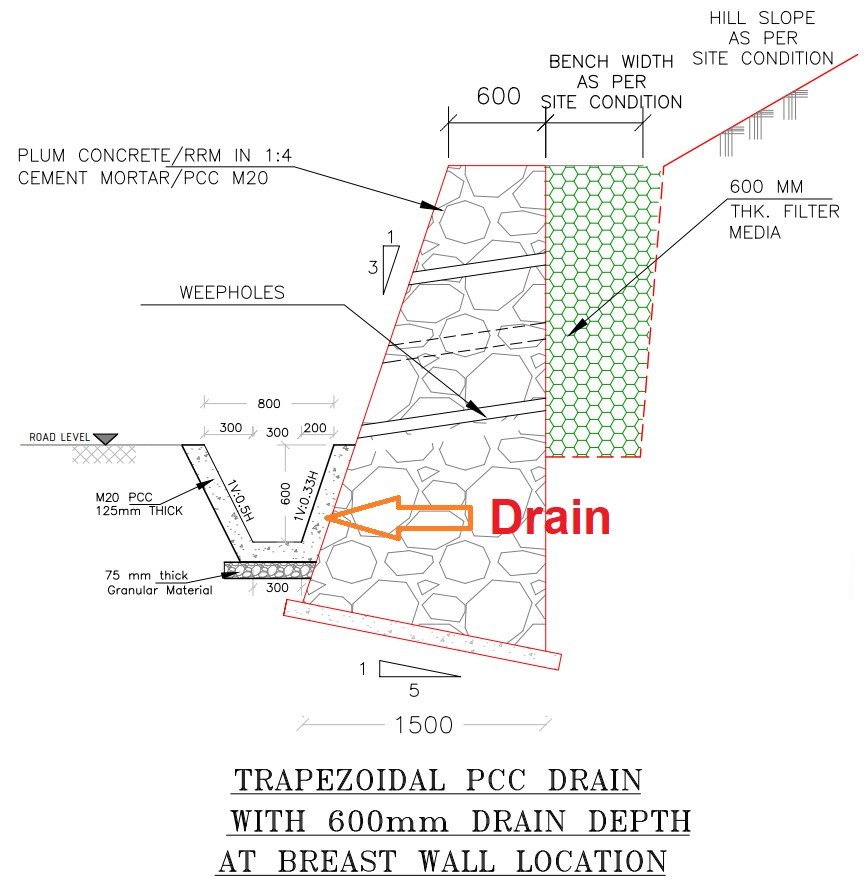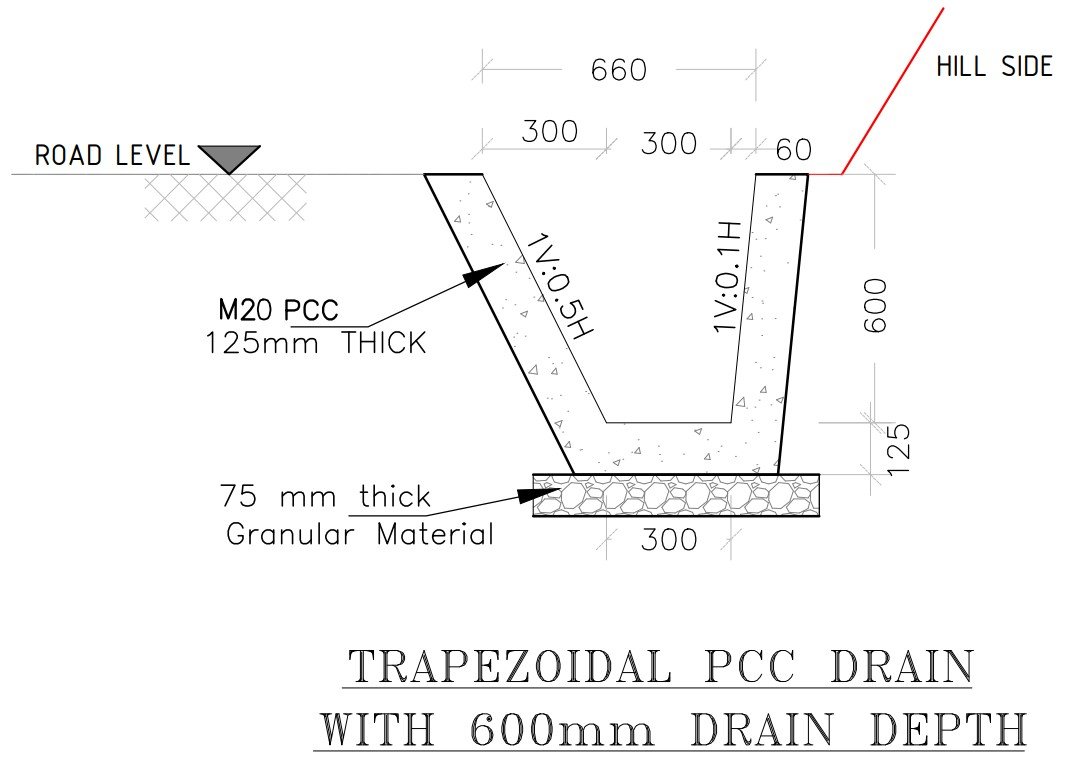Drain construction is crucial in civil engineering, managing water flow and preventing issues. It ensures safety and structural integrity of infrastructure. Efficient drainage systems control water accumulation, mitigating flooding risks. They are essential in urban planning and rural development, channeling excess water away from saturated areas during heavy rainfall.
Table of Contents
Introduction to Drain Construction
Drain are essential components of any infrastructure system, designed to manage and direct water flow away from areas where it can cause damage or create hazardous conditions. Whether in urban settings, agricultural lands, or industrial sites, drains play a crucial role in preventing flooding, erosion, and waterlogging, ensuring the safety and functionality of buildings, roads, and landscapes. This article explores the types of drain, their significance, and best practices for their design, construction and maintenance.
Types of Drain
Drains can be categorized based on their function, construction, and location. The most common types include:
1. Surface Drain
- Overview: Surface drains are designed to remove water from the surface of the ground, such as roads, pavements, fields, and rooftops. These drains are visible and often form part of the landscape.
- Examples:
Open Channel Drains: Channels or ditches that collect and direct surface water to a discharge point, commonly seen along roadsides or in agricultural fields. Trapezoidal drain, V shape drain, U drain, Box drain etc. are different types of drains according to the shape.
Gutters and Downspouts: Used in buildings to channel rainwater from roofs to the ground or into a stormwater system.

2. Subsurface Drain
- Overview: Subsurface drains are installed below the ground to remove water that has infiltrated the soil, preventing waterlogging and maintaining soil stability.
- Examples:
French Drains: Gravel-filled trenches containing perforated pipes that collect and redirect groundwater away from structures.
Tile Drains: A network of underground pipes, typically used in agricultural fields to improve soil drainage and crop health.
3. Storm Drain
- Overview: Storm drains are built to handle rainwater runoff in cities, helping to avoid flooding when it pours. They usually link up with the local stormwater management systems.
- Examples:
Catch Basins: These are openings that gather rainwater from streets and parking lots, channeling it into underground stormwater systems Catchpit or Catch Basins. This catch pit is connected to a hume pipe culvert or box culvert to discharge the entire storm water.
Culverts: These are pipes or tunnels that transport stormwater beneath roads, railways, or embankments.
4. Combined Drain
- Overview: Combined drains are designed to transport both stormwater and wastewater through one system. While they can be effective, they might cause sewer overflows when there’s heavy rain.
- Examples:
Combined Sewers: Often found in older cities, these systems gather both sewage and rainwater, sending them to treatment facilities or outfalls.
Importance of Drain
Having good drainage is super important for keeping our infrastructure safe, functional and lasting longer. Here’s why drains matter:
Flood Prevention
Drains stop water from piling up in low areas, which helps lower the chances of flooding that can really mess up property and infrastructure. Urban stormwater drains are designed to handle heavy rain, moving water away from streets and buildings.
Erosion Control
Drains manage water flow to keep soil from washing away, especially on slopes and embankments.
Surface drains in farms help keep the soil intact by preventing erosion during heavy downpours.
Health and Sanitation
Good drainage systems stop water from sitting around, which can attract mosquitoes and other pests that spread diseases. Urban drains that carry wastewater away from homes help protect public health by cutting down the risk of waterborne illnesses.
Protection of Infrastructure
Drains shield roads, buildings, and other structures from water damage that can happen with poor drainage, like weakening foundations and road wear. Subsurface drains around building foundations keep water from leaking into basements and causing structural issues.
Considerations for Drain Design
Creating an effective drainage system involves thoughtful planning and attention to several key factors:
Hydraulic Capacity
Drains need to be engineered to accommodate the anticipated water flow, taking into account elements like rainfall patterns, the size of the catchment area, and how well the soil absorbs water. Engineers rely on hydrological data and modeling techniques to determine the appropriate dimensions and capacity for the drains.
Slope and Gradient
The angle of a drain plays a crucial role in its efficiency for water movement. An ideal slope allows water to flow swiftly enough to avoid sediment buildup while preventing excessive speed that could lead to erosion. Surface drains are typically constructed with a gentle slope to guide water toward the designated discharge location.
Material Selection
Selecting the right materials for drains is influenced by factors such as longevity, cost-effectiveness, and environmental considerations. Common choices CC drain(generally m15 concrete or m20 concrete are used), RCC drain, PVC and HDPE for pipes, along with gravel for subsurface drainage. In areas with heavy traffic, durable materials like reinforced concrete are frequently chosen to ensure lasting performance.
Environmental Impact
Drainage systems should be designed to reduce their ecological footprint, which includes preventing erosion, preserving natural waterways, and safeguarding local wildlife. Environmental evaluations are often performed to confirm that drainage solutions do not interfere with local ecosystems or contribute to pollution.
Drain Construction and Maintenance
For Road side drainage construction the IRC:SP:42-2014 is followed.
Construction Process
- Site Preparation: First off, the area where the drains will go gets cleared and leveled according to the plan.
- Excavation: Next, trenches are dug to the right depth and angle, then pipes are laid down or channels are built.
- Base Preparation: Compact the base material to create a firm foundation for the drain, ensuring it is level and consistent.
- Structure Preparation: For surface drains, construct the drainage channels for concrete sections, ensuring they are aligned and sloped properly in shuttering.
- Backfilling and Compaction: After that, the trenches are filled back up with the right materials and compacted to keep everything stable and protect the drains from any weight on top.
Maintenance Tips
- Regular Cleaning: It’s important to clean drains often to get rid of debris, sediment, and anything else that might block water flow.
- Inspection and Repair: Regular checks help spot and fix any issues like cracks or leaks, keeping the drains working well.
- Vegetation Control: Keep an eye on the plants around the drains to stop roots from getting in and causing damage.
Best Practices in Drain Construction and Management
- Proper Sizing and Placement
Tip: Make sure drain are the right size to handle heavy water flow and place them where they’ll work best for managing water.
Result: Proper sizing and placement help avoid overflow, flooding, and waterlogging, making the system reliable. - Eco-Friendly Materials
Tip: Choosing green materials and building methods can lessen the environmental impact of drainage systems.
Result: Sustainable choices help protect local ecosystems and lower the carbon footprint of construction. - Working with Nature
Tip: Whenever possible, design drainage systems to complement natural watercourses, boosting their efficiency and cutting down on the need for heavy artificial structures.
Result: This approach saves money and minimizes environmental disruption.
Conclusion
Drains play a crucial role in our civil infrastructure. They help manage water, safeguard properties, and keep public health in check. No matter if it’s in cities, farms, or industrial zones, having well-thought-out and properly maintained drainage systems is key to preventing floods, controlling erosion, and shielding infrastructure from water-related issues. By grasping the different types of drains, recognizing the significance of smart design, and following best practices in building and upkeep, engineers and planners can develop effective and sustainable drainage solutions that enhance the long-term growth and safety of communities.

